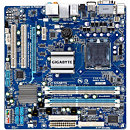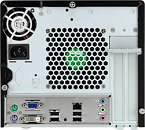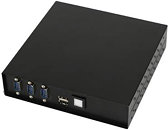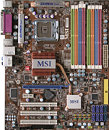
ASRock Industrial Unveils iEP(F)-9040 Series, Edge AIoT Platform with Intel Core 200S Processors
ASRock Industrial introduces the iEP(F)-9040 Series, a next-generation Robust Edge AIoT Platform designed to deliver high-performance edge AI computing, real-time industrial automation, and scalable expansion for smart manufacturing, intelligent vision systems, autonomous robotics, and edge AI applications. Powered by Intel Core 200S Processors (Bartlett Lake-S), the iEP(F)-9040 Series enables seamless AI inferencing, high-speed data processing, and intelligent edge computing for industrial IoT and AIoT applications. With support for up to 24 cores and 32 threads with enhanced longevity, DDR5 5600 MHz memory up to 96 GB, PCIe Gen 5 expansion, the Series is built to handle complex AI workloads. Designed to thrive in extreme industrial conditions, the series supports up to -40°C~75°C wide operating temperature range and 9 V-36 V DC power input with ignition control, ensuring reliable operation in mission-critical environments. The iEP(F)-9040 Series features rich industrial I/O, supports real-time TSN/TCC, and connectivity options like 5G/4G LTE, Wi-Fi 6E and BT 5.4 for high-speed, low-latency communication. The Series is ideal for various industrial applications such as smart factory, AI-based Inspection, robotics, surveillance, smart transportation, and more, providing a future-ready AIoT solution for next generation edge and industrial intelligence.
Optimized AI and Compute Performance with Intel Core 200S Processors
The iEP(F)-9040 Series harness the power of Intel Core 200S Processors (Bartlett Lake-S) to deliver superior computing performance and AI acceleration with long-term support. With up to 24 (8P+16E) cores, delivering up to 32 threads, the series enables real-time AI inferencing, industrial automation, and intelligent edge computing. Compared to previous generations, Intel Core 200S Processors (Bartlett Lake-S) achieve up to 1.06x faster single-threaded and 1.08x faster multi-thread performance. Supporting dual DDR5 5600 MHz SO-DIMM memory up to 96 GB, the iEP(F)-9040 Series significantly boosts machine vision, AI model deployment, and automation. Integrated Intel UHD Graphics provides up to 4K high-resolution AI-driven imaging, with DisplayPort 1.4a, HDMI 2.0b, and VGA outputs for flexible industrial display configurations.
Optimized AI and Compute Performance with Intel Core 200S Processors
The iEP(F)-9040 Series harness the power of Intel Core 200S Processors (Bartlett Lake-S) to deliver superior computing performance and AI acceleration with long-term support. With up to 24 (8P+16E) cores, delivering up to 32 threads, the series enables real-time AI inferencing, industrial automation, and intelligent edge computing. Compared to previous generations, Intel Core 200S Processors (Bartlett Lake-S) achieve up to 1.06x faster single-threaded and 1.08x faster multi-thread performance. Supporting dual DDR5 5600 MHz SO-DIMM memory up to 96 GB, the iEP(F)-9040 Series significantly boosts machine vision, AI model deployment, and automation. Integrated Intel UHD Graphics provides up to 4K high-resolution AI-driven imaging, with DisplayPort 1.4a, HDMI 2.0b, and VGA outputs for flexible industrial display configurations.





































